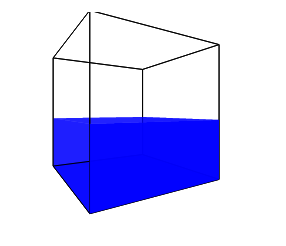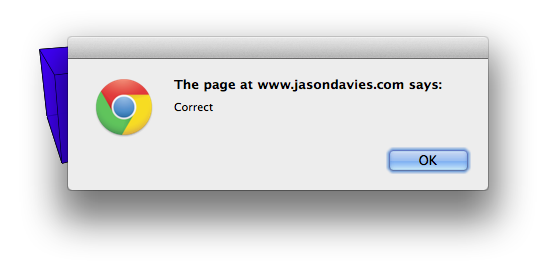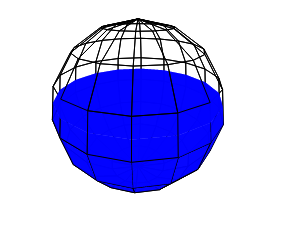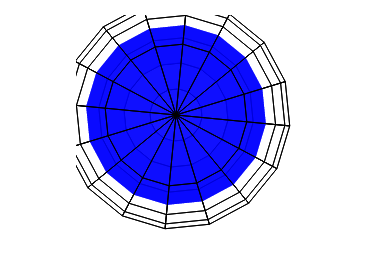
I used the Filling Objects interactivity with a group of twenty students enrolled on a Mathematics Enhancement Course, at Liverpool Hope University. This course is designed to provide non-specialist graduates with sufficient mathematical background to become secondary school mathematics teachers. The interactivity was introduced during the final session of a twelve session calculus module. The focus of the module had been predominantly pure calculus techniques.
The session was held in a computer laboratory so each student could access the Filling Objects interactivity. I gave little guidance other than "explore the environment" and "gain a greater insight into the situation using mathematics."
Students were initially quite lost, since problems of this kind had not been explicitly introduced in the module thus far. Students were asked to verbalise their questions to the tutor who shared them with the rest of the group.

The initial exchange between students was centred on exploring and defining what information could be found.
“It's an object filling, what can we find out?”
“How quickly it is filling?”
"How do I express the volume in terms of t?"
"How does this relate to the shape?”
“That’s the rate of change!” (Students identifying dV/dt)
“Rates of change have to be important then, it looks like we are given a fill rate. So what do we want to find.”
“Maybe it is the rate at which it is filling at a given height?”
“We can get equivalent rates of change using the chain rule.”
“We can describe the shapes using geometry.”
“I like how you can see the shape filling like it would in real life.”
Although not all the students were able to attempt the mathematics at this stage, none of the students ever said they were “stuck”. The students were quite happy to continue exploring the different shapes and generating questions.
“The cube is going to be the easiest one.”
“Why?”
“It's the same all the way up.”
“It's correct!”
One of the students had managed to receive the notification of being correct using the cube and other students gather round to explore the solution. Following some discussion students went away and achieved the same ‘Correct’ notification on their own work.

“What's the next easiest, the sphere maybe? We know the volume of a sphere. We can use the change of that volume with time.”

“Why didn't that work?”
“It's correct!”
One of the students completed the cylinder. The cylinder is decided to be the next easiest.
“Why is that easier than the sphere?”
“It's the same all the way up.”
“Why is the sphere more difficult then? It's not the same, look at it from the top, You can see the radius is changing as you go up!”

“That's difficult!”
“Is it impossible though?”
“No, of course not.”
“What is that shape then, if it isn't as sphere.”
A student finds an equivalent shape using the Internet.
“Is it a spherical cap? That looks like it!”
“It's correct!”
At this point students began to work more collaboratively, sharing ideas and approaches. When one student shared his correct solution other students didn’t understand why he was correct. Despite his explanations, some were unconvinced.
“Those cylinders with changing widths look impossible.”
“Are they though?”
“Well, no they can't be. I will have to think about that one...”
Students enjoyed the session even though they didn’t all achieve the same level of understanding and many found the experience challenging. They found the Filling Objects interactivity to be a useful tool for exploring and trying out their answers, “without needing the teacher.” As a tutor I would definitely use such a practical student-centre approach again.